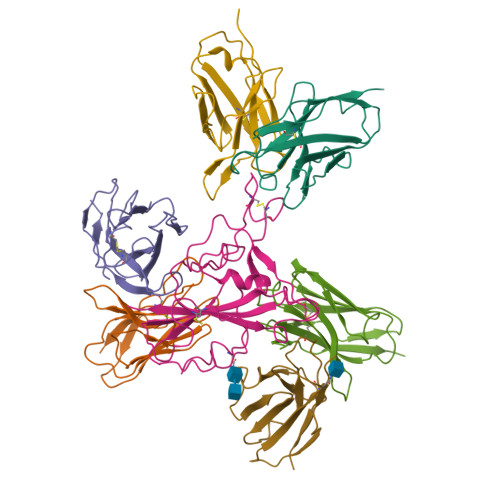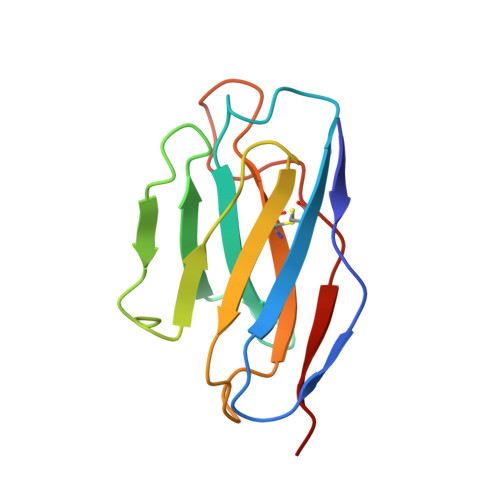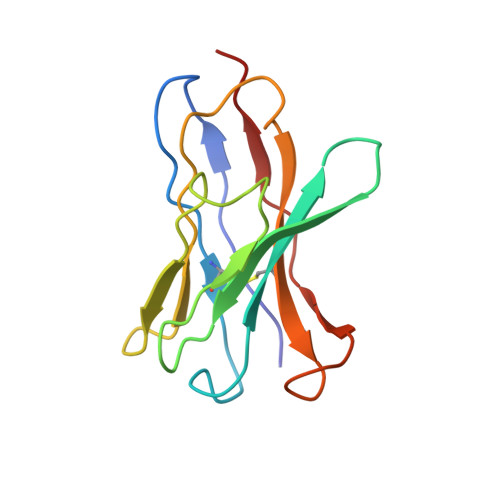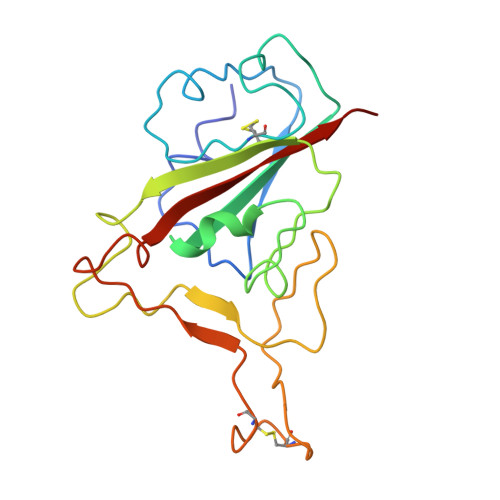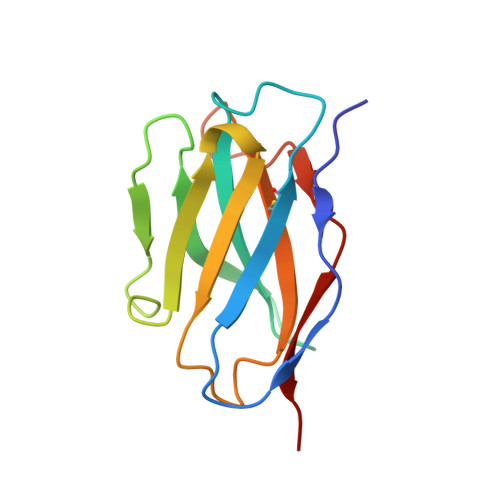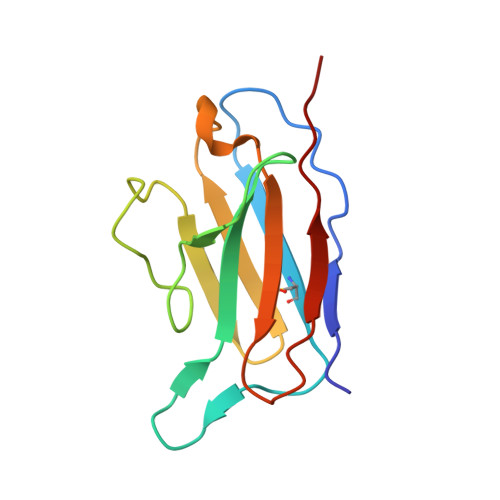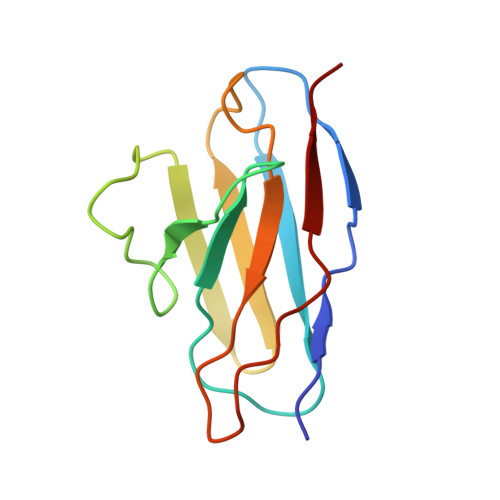Lineage-mosaic and mutation-patched spike proteins for broad-spectrum COVID-19 vaccine.
Wu, Y., Wang, S., Zhang, Y., Yuan, L., Zheng, Q., Wei, M., Shi, Y., Wang, Z., Ma, J., Wang, K., Nie, M., Xiao, J., Huang, Z., Chen, P., Guo, H., Lan, M., Xu, J., Hou, W., Hong, Y., Chen, D., Sun, H., Xiong, H., Zhou, M., Liu, C., Guo, W., Guo, H., Gao, J., Gan, C., Li, Z., Zhang, H., Wang, X., Li, S., Cheng, T., Zhao, Q., Chen, Y., Wu, T., Zhang, T., Zhang, J., Cao, H., Zhu, H., Yuan, Q., Guan, Y., Xia, N.(2022) Cell Host Microbe 30: 1732-1744.e7
- PubMed: 36323313
- DOI: https://doi.org/10.1016/j.chom.2022.10.011
- Primary Citation of Related Structures:
7WP6, 7WP8 - PubMed Abstract:
SARS-CoV-2 spread in humans results in continuous emergence of new variants, highlighting the need for vaccines with broad-spectrum antigenic coverage. Using inter-lineage chimera and mutation-patch strategies, we engineered a recombinant monomeric spike variant (STFK1628x) that contains key regions and residues across multiple SAR-CoV-2 variants. STFK1628x demonstrated high immunogenicity and mutually complementary antigenicity to its prototypic form (STFK). In hamsters, a bivalent vaccine composed of STFK and STFK1628x elicited high titers of broad-spectrum neutralizing antibodies to 19 circulating SARS-CoV-2 variants, including Omicron sublineages BA.1, BA.1.1, BA.2, BA.2.12.1, BA.2.75, and BA.4/5. Furthermore, this vaccine conferred robust protection against intranasal challenges by either SARS-CoV-2 ancestral strain or immune-evasive Beta and Omicron BA.1. Strikingly, vaccination with the bivalent vaccine in hamsters effectively blocked within-cage virus transmission of ancestral SARS-CoV-2, Beta variant, and Omicron BA.1 to unvaccinated sentinels. Thus, our study provided insight and antigen candidates for the development of next-generation COVID-19 vaccines.
Organizational Affiliation:
State Key Laboratory of Molecular Vaccinology and Molecular Diagnostics, National Institute of Diagnostics and Vaccine Development in Infectious Diseases, School of Public Health & School of Life Sciences, Xiamen University, Xiamen 361102, China.








